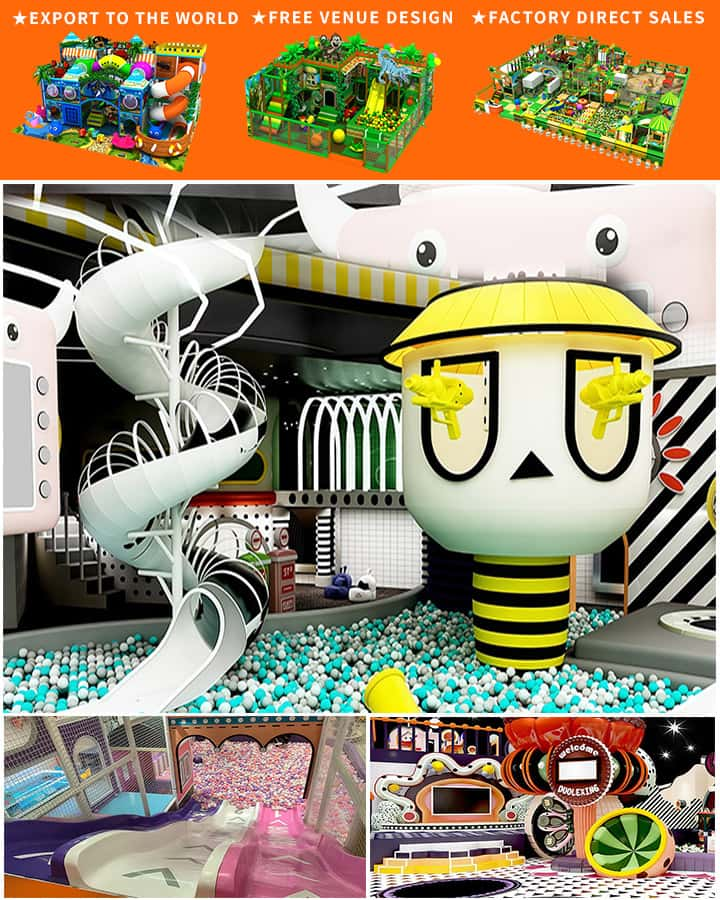Creating an indoor playground suitable for 1-year-olds is a rewarding endeavor, offering endless opportunities for sensory exploration and developmental growth. One-year-olds are at a crucial stage of their growth, characterized by rapid physical, cognitive, and emotional advancements. An indoor playground tailored to meet their unique needs can provide a nurturing environment where they are free to discover the world around them in a safe and stimulating setting. Here’s how you can design an enchanting indoor playground that caters specifically to toddlers aged one.
Safety First: The Foundation of Any Play Environment
When it comes to designing an indoor playground for 1-year-olds, safety should always be the top priority. Toddlers at this age are curious and mobile, often exploring their surroundings with little regard for potential hazards. Therefore, the playground must be designed with soft, non-toxic materials to cushion any accidental falls or bumps. Rubber mats, foam padding, and rounded edges on all equipment can significantly reduce the risk of injury. Additionally, ensure that all components are securely anchored to prevent tipping or collapse, providing a stable and secure play area.
Sensory Exploration: Engaging the Senses
One-year-olds experience the world primarily through their senses. Incorporating elements that engage sight, sound, touch, taste, and smell into the playground design can stimulate their developing minds. Consider using brightly colored toys and structures to attract their attention and encourage visual tracking. Soft, textured surfaces and varied materials invite tactile exploration, while gentle background music or natural sounds can create a calming auditory environment.
 Developmental Zones: Encouraging Growth Through Play
Developmental Zones: Encouraging Growth Through Play
To support the multifaceted development of 1-year-olds, divide the playground into distinct zones each focusing on different aspects of growth such as gross motor skills, fine motor skills, and social interaction.
Gross Motor Skills Zone: Include equipment like small slides, soft climbing walls, and tunnels that promote crawling, scooting, and walking. These activities help strengthen their muscles and improve coordination.
Fine Motor Skills Zone: Provide areas with manipulatives such as large building blocks, shape sorters, and nesting toys to enhance hand-eye coordination and dexterity.
Social Interaction Zone: Create spaces where children can interact with peers and caregivers, fostering social skills and emotional development. Soft play structures like ball pits and interactive panels encourage cooperative play and communication.
Comfort and Convenience: Thoughtful Design Choices
For parents and guardians, an indoor playground for 1-year-olds should also be a comfortable and convenient space. Incorporate seating areas with padded benches where caregivers can relax while keeping an eye on their little ones. Easy-to-clean surfaces and durable materials make maintenance hassle-free, ensuring the playground remains a hygienic and welcoming environment. Adequate lighting and climate control further enhance comfort, making the space pleasant year-round.
Personalization and Flexibility: Tailoring to Individual Needs
Every child is unique, and their interests and developmental pace vary. A well-designed indoor playground should offer flexibility to adapt to individual needs. Movable partitions or modular play structures allow for customization based on the child’s preferences and developmental stage. Personal touches, such as themed decorations or favorite characters, can make the space more engaging and enjoyable for young ones.
In conclusion, designing an indoor playground suitable for 1-year-olds involves a thoughtful blend of safety, sensory engagement, and developmental support. By prioritizing these elements, you can create a magical space where toddlers thrive, learn, and grow, laying a strong foundation for their future development. Such a playground not only provides joy and excitement but also becomes an essential tool in their early formative years.




